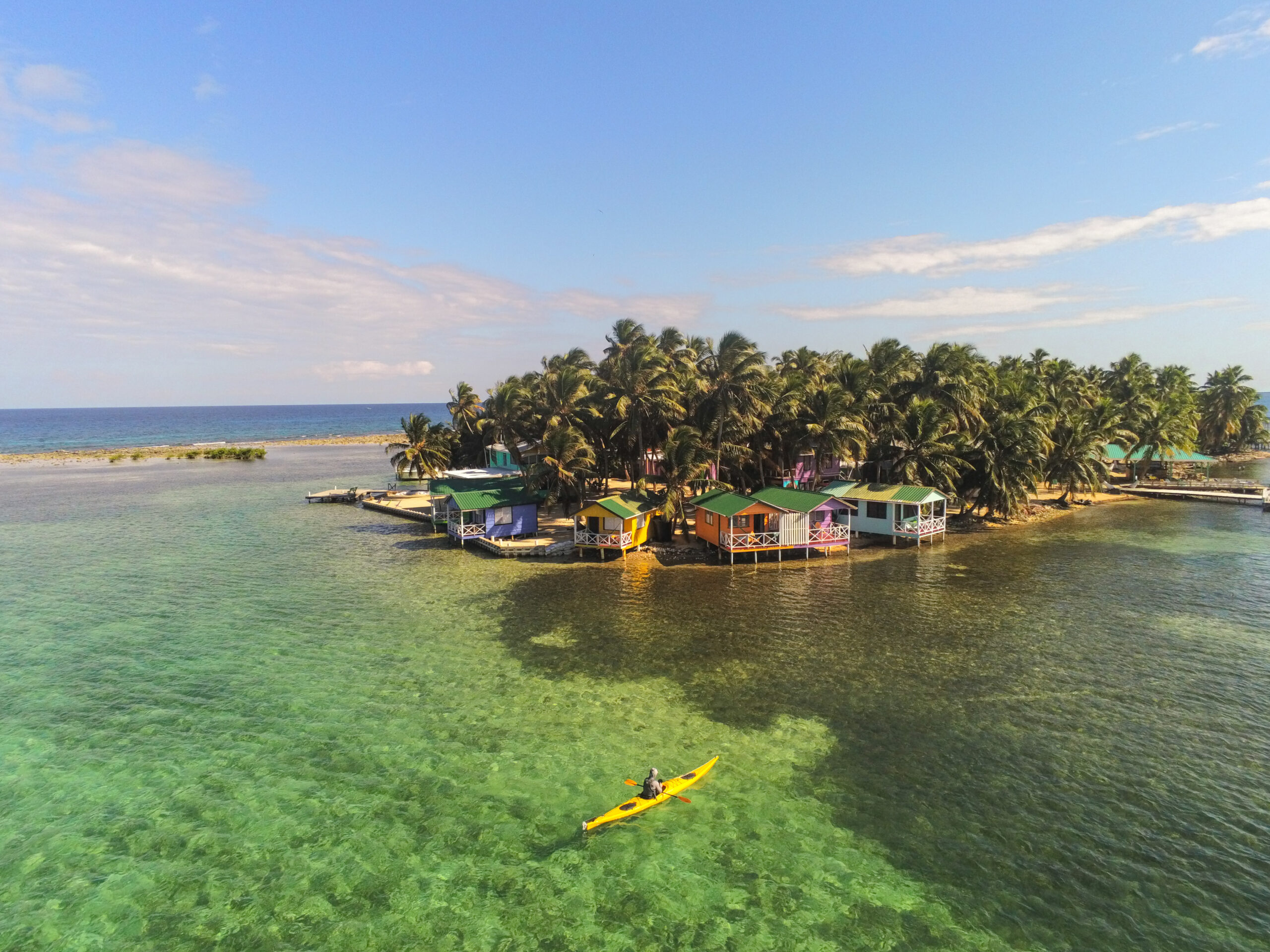Mother Nature is to be respected in all forms, particularly on the ocean. The sea can turn on you in an instant, with changing tides, currents, weather and various other unexpected hazards. How to stay safe when sea kayaking is the most important piece of knowledge you need – as the number one priority of all outdoor adventures is to make sure everyone gets home safe.
Many accidents at sea could have been avoided if the points below had been implemented.
With the following information, we can remove fear from the equation and be sure to safely navigate the seas, even when things start to fall apart.
Here are 8 ways to stay safe when sea kayaking:

1. Wear a Personal Floatation Device
Every year, a saddening number of lives are lost at sea due to people not wearing their Personal Floatation Devices (PFD). Data shows that 70-80% of kayak drowning victims were not wearing a lifejacket at the time of the accident.
Is wearing a PFD important? If you want to stay safe when sea kayaking – Yes
Capsizes mostly occur unexpectedly, either from rough water, weather or user error. This leads to panic when you end up in the water, further panic when you struggle to get back in the boat and eventually exhaustion and potentially drowning. A PFD allows you to relax, take a breath, weigh up your options and move forward in a calm manner. Even if you can’t get back in your boat, you can lay back and float until help arrives. The foam padding in the jacket always provides extra warmth.
2. Dress Appropriately to the Conditions
There’s a saying in kayaking, ‘dress for the water, not the weather’. What this points out is that often the air and the sea temperatures can be vastly different. This doesn’t mean that you should wear a full dry suit all through summer. But it’s worth always thinking to yourself, would I be okay if I went for an unexpected swim? Cold shock and hypothermia can set in rapidly.
The same is true for warm weather. When I am kayaking in Mexico or Belize, where the sun is beating down, there’s nowhere to hide, I’m not worried about staying warm – I’m trying to cool down and hide from the sun! Having the appropriate sun protection is incredibly important to avoid burns and heat stroke.
Kayaks have plenty of storage space, so use those hatches to pack extra warm layers, sunscreen or a change of clothes.

3. Know Your Limits
We all come from our own unique areas of expertise and training. We all hold different skill sets and with it a different level of confidence in the water. Sea conditions that I might consider fun and playful may be terrifying to the next person. Likewise, I could look out to sea and think “nah, I’m going back to bed” whilst my friend is already gearing up for a surf!
What’s important is to know your limits.
Where do you draw the line and stop having fun? This is a conversation to have with other paddlers in the group before you head out to ensure everyone is on the same page. You should be operating at the level of the least experienced paddler, not the most.
This point also extends to solo paddle vs group paddle. I love solo kayaking. I find it so freeing; I move at my pace, on my schedule and can stop to appreciate wildlife or nature for as long as I wish. Solo kayaking can be perfectly safe if you have the necessary skills to make it so. If you don’t yet have the ability to stay safe when kayaking solo? Then consider only paddling with a group of more experienced kayakers until then.
4. Read the Weather
The sun is shining, not a cloud in the sky, and I’m on the phone cancelling kayak tours due to bad weather.
“What?!”
This is usually the reaction most guests give. That’s because most people’s reads on the weather get as far as “Will it rain? And will I need a coat?” For us kayakers, we need to dive deeper and take a good look at the wind speed and direction.
The wind is important for us to decide if it’s safe to kayak.
- Is it on-shore or off-shore?
- Will we be able to find shelter from the wind using the cliffs and land features?
- Which way will we be blown if it gets worse or if we have an incident out on the water?
Weather forecasting is a difficult job and the reports aren’t always accurate. Be sure to use multiple sources for your weather report and look not only at what’s happening now but what’s coming later.

5. Practice Your Rescue Skills
‘When things go bad, you don’t rise to the occasion, you fall back on your training.’
There are a number of scenarios that would require a rescue, such as an injured paddler, broken equipment, a capsize, multiple capsizes and so on…
If you ‘Know Your Limits’ and decide to paddle with a more experienced group, hopefully, they can handle the situation for you. Or if you stayed in a sheltered bay that you could stand up in, you could wade back to shore.
Outside of that, a rescue could be a serious emergency. If you plan to be paddling alone, then you need to learn how to self-rescue. Learning rescue skills is both necessary and can be quite fun. It will improve your all-around kayak skill set and give you a huge confidence boost knowing that you are capable of righting yourself if things were to go wrong.
6. Hope for the Best, Plan for the Worst
This is an ethos that I live by with all of my adventures.
I don’t want it to rain, but I’ll bring waterproofs. I don’t want to capsize, but I’ll have the right equipment on in case I do. I don’t want anyone to get hurt, but I’ll bring my First Aid kit just in case.
This mentality allows you to cover all bases and never be caught short when out enjoying nature.

7. Emergency Communication
Part of planning for the worst and staying safe whilst kayaking is having a way to contact help if help is needed. This could be a cell phone, a VFH radio or even an EPIRB GPS device in remote areas. Which you choose simply comes down to which one will work best in the location you’re going.
Bear in mind that a lot of wilderness areas don’t have good phone service, and if you’re paddling around high cliffs, then you might not have a signal on your radio either.
Whatever you choose, it needs to be kept on you at all times. Not hidden away in a dry bag at the end of your kayak!
8. Take a Lesson
The safest way to sea kayak; to learn how to mitigate risks, manage hazards and have an enjoyable experience on the water, is to book a lesson. This is a fun way to explore your local area and find some new spots you never knew about, all the while asking questions to your knowledgeable guide.
Kayak lessons could build towards becoming a certified kayaker, or just fill in any bits of information that would help you navigate your own journey as a kayaker.
Want to take this to the next level?
Why not book a multiday kayak tour in a beautiful part of the world, such as the Global Shenanigans Expeditions to Baja or Belize? We cover all of the above points of how to stay safe when sea kayaking, allowing you to slowly build your confidence in a managed environment.
There’ll be plenty of time to ask any questions and leave feeling stoked to get back out on the water!
| CLICK HERE FOR BAJA | CLICK HERE FOR CROATIA |
How to Stay Safe When Sea Kayaking?
Armed with the knowledge presented in this article, I hope you can approach the ocean with a better understanding of how to keep yourself safe and ultimately, get back to shore at the end of the day.
With the right equipment, a look at the weather forecast, an understanding of your skill level, some basic rescue training and a plan of what to do if things were to go wrong, you can comfortably and safely navigate the waters in your kayak and enjoy a lifelong hobby of adventure and exploration!
Head back to the Everything You Need to Know About Sea Kayaking Guide


